Abstract
Transplacental infection of the mouse embryo with St. Louis encephalitis (SLE) virus was produced by injecting the mother with virus at various stages of gestation. Intravenous or subcutaneous injection of the mother with 105.9 suckling mouse median lethal dose (SMLD50) of SLE virus was found to infect 83 to 96% of the embryos when given at 4 days of gestation or later. Injections at 6 days of gestation or earlier had little effect on the embryo although virus could be recovered at 10 days of gestation when injected at 4 days of gestation, whereas injections at 7 days or later resulted in a high mortality at birth and during the first week of life. Embryos from females injected at 7 to 9 days of gestation were found to have become infected when necropsied 3 days after injection, but no virus could be isolated from the young of similarly infected mothers at birth. A large number of these young died at birth, and some were observed with signs of anoxia and incoordination. Young of mothers injected later in pregnancy usually lived for a few hours to a few days and were then observed to die with signs of encephalitis. Virus was routinely isolated from these mice.
Full text
PDF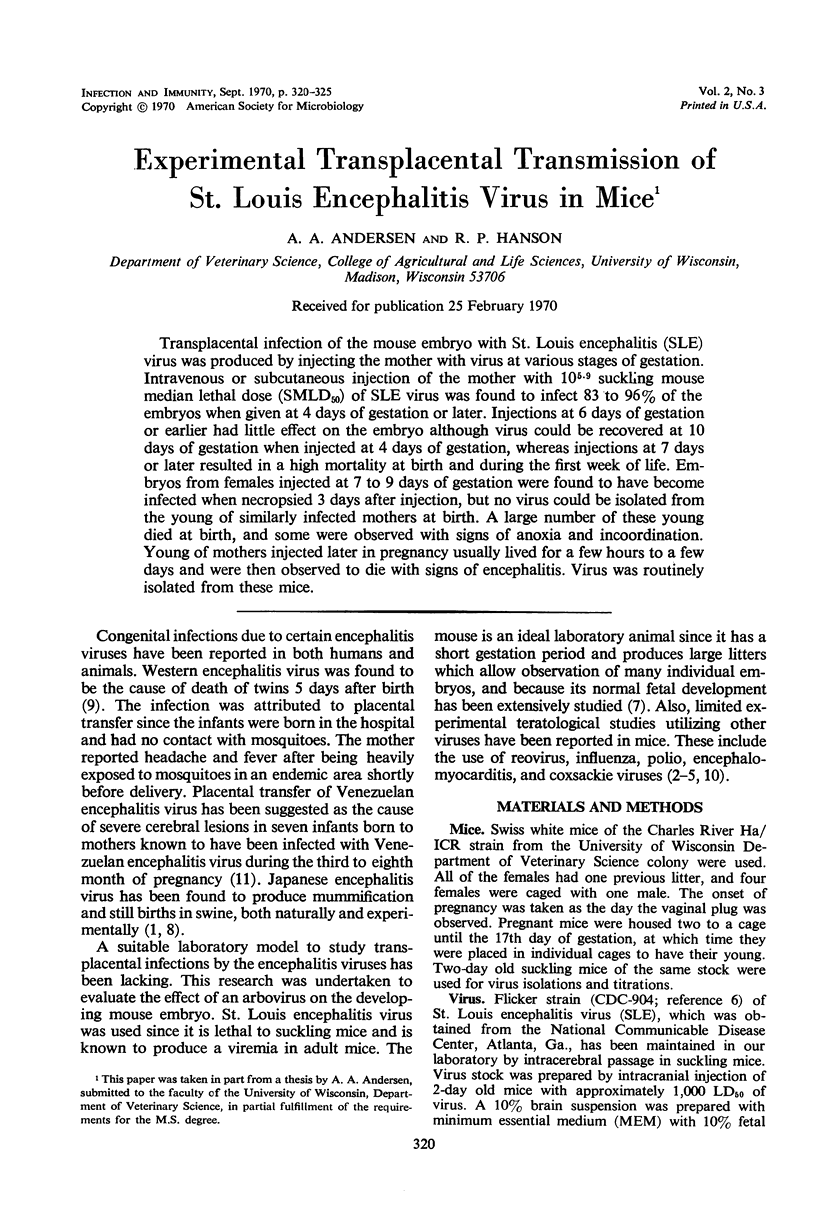
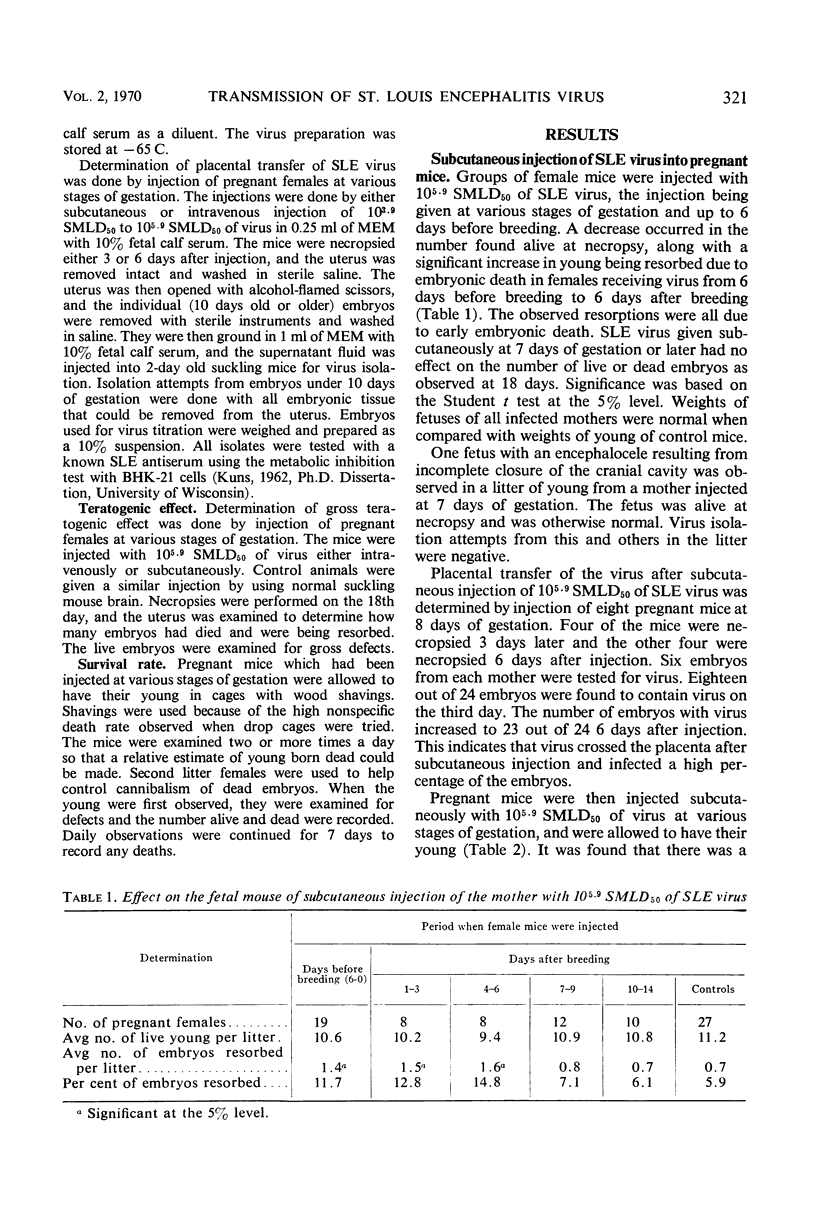
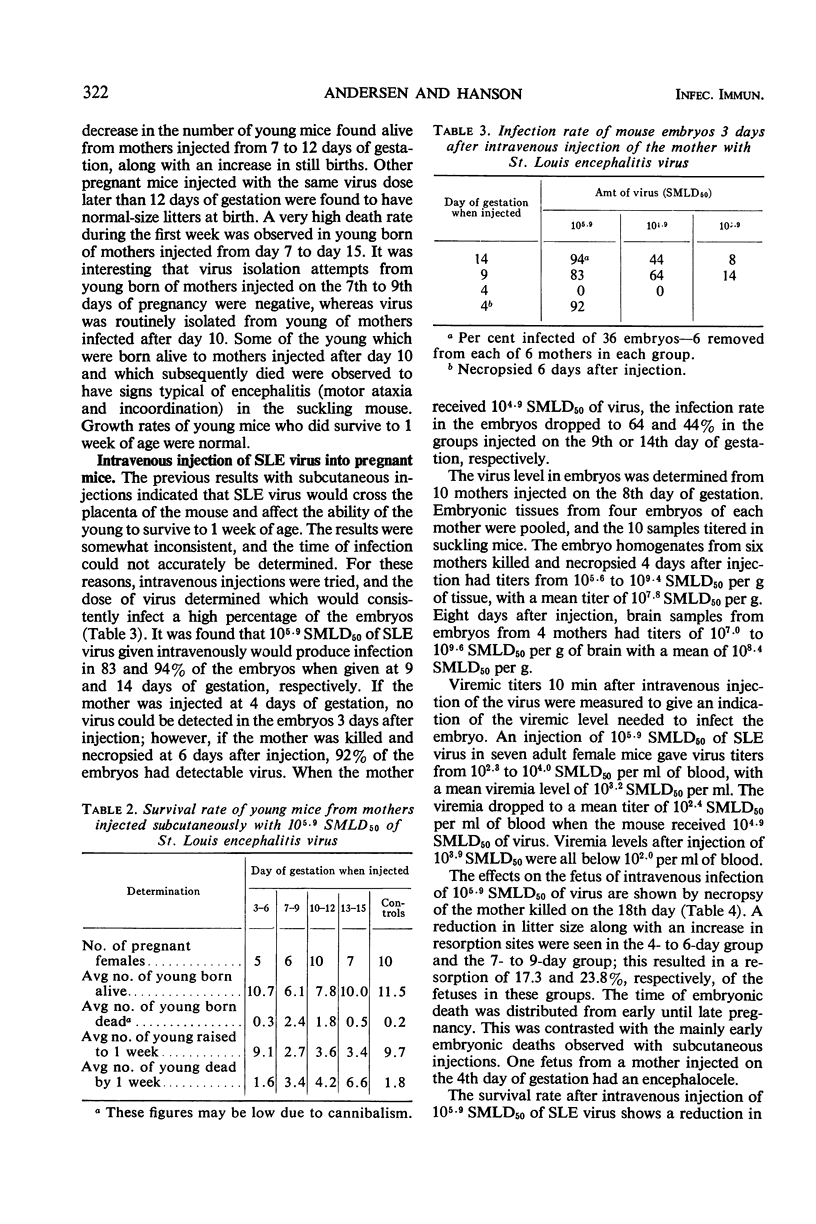
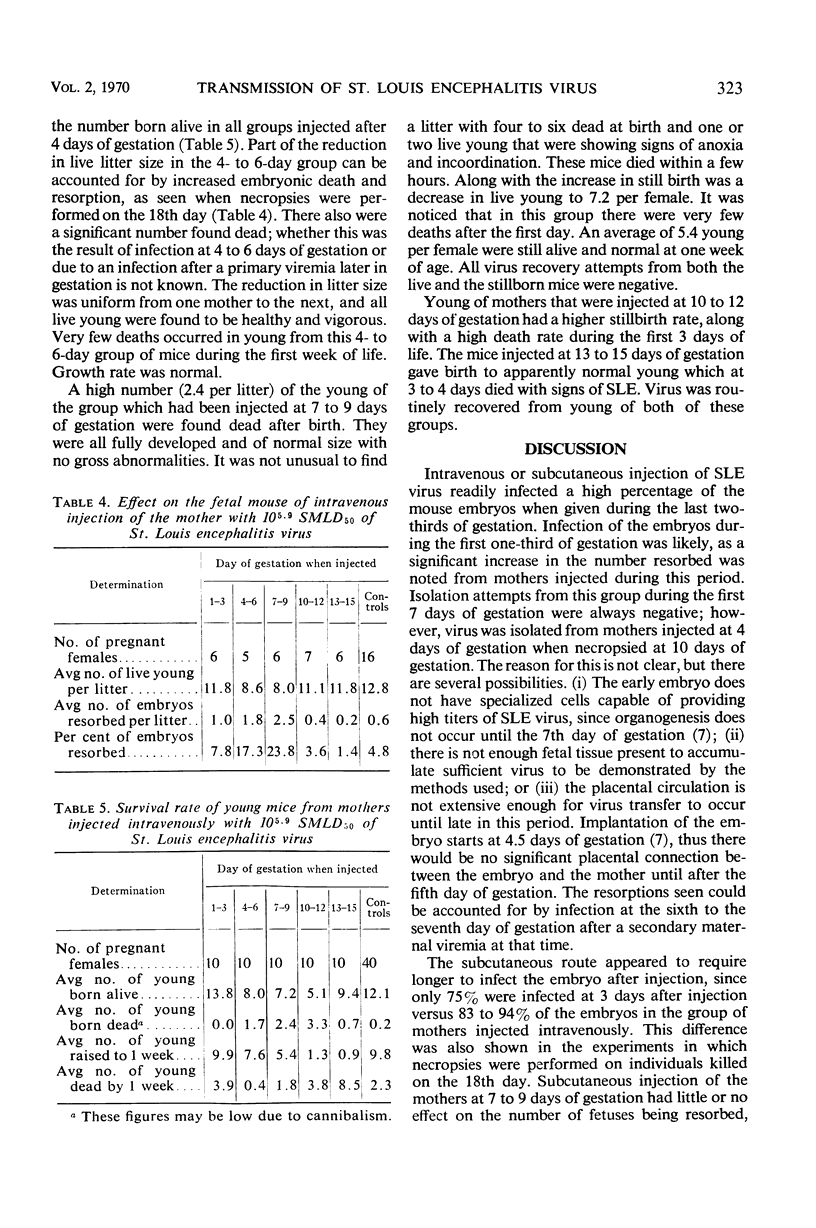
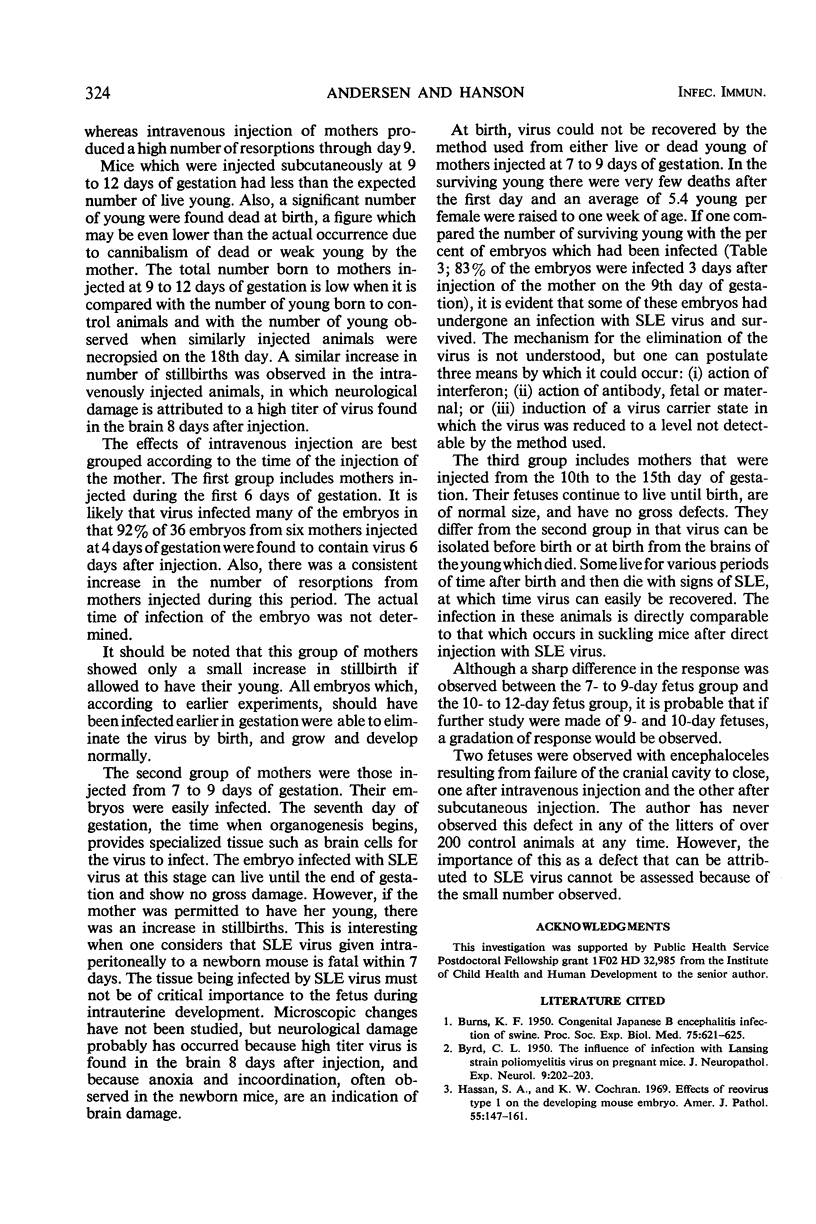
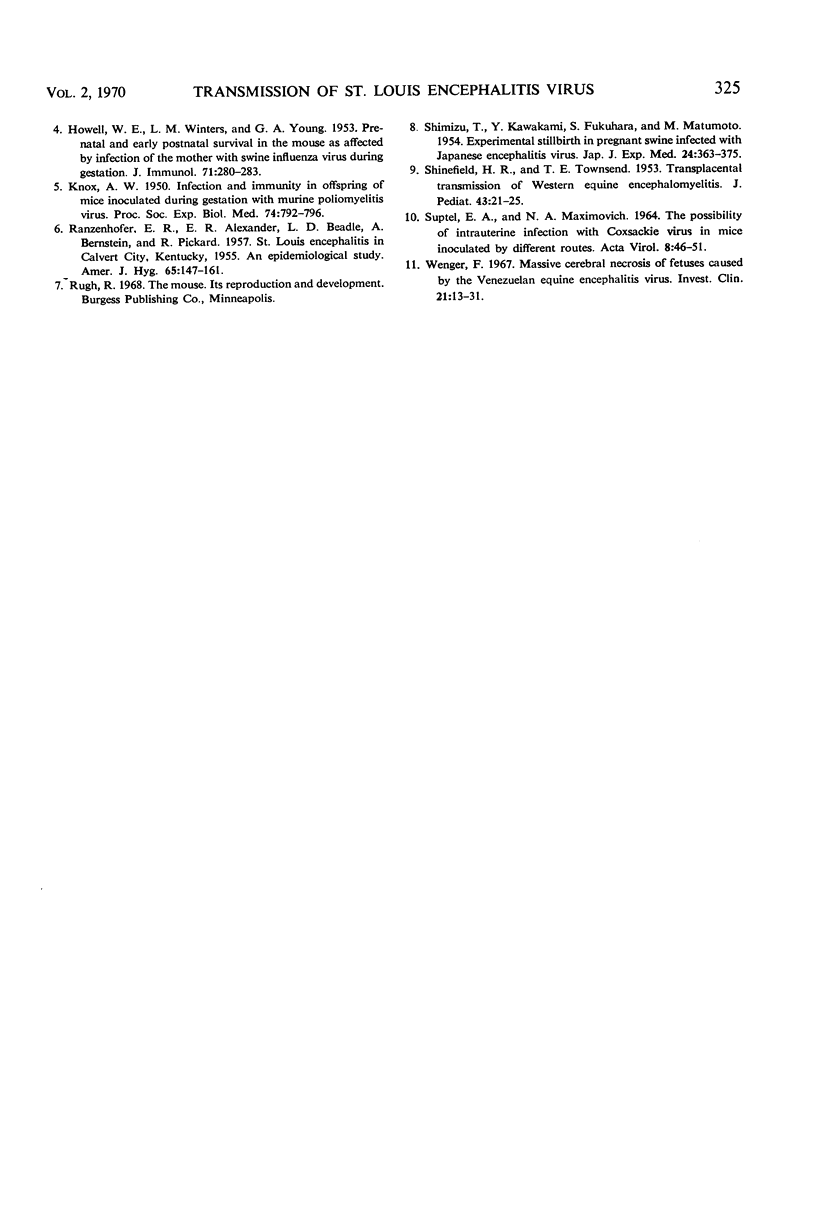
Selected References
These references are in PubMed. This may not be the complete list of references from this article.
- BURNS K. F. Congenital Japanese B encephalitis infection of swine. Proc Soc Exp Biol Med. 1950 Nov;75(2):621–625. doi: 10.3181/00379727-75-18285. [DOI] [PubMed] [Google Scholar]
- BYRD C. L. The influence of infection with Lansing strain poliomyelitis virus on pregnant mice. J Neuropathol Exp Neurol. 1950 Apr;9(2):202–203. doi: 10.1097/00005072-195004000-00010. [DOI] [PubMed] [Google Scholar]
- HOWELL W. E., WINTERS L. M., YOUNG G. A. Prenatal and early postnatal survival in the mouse as affected by infection of the mother with swine influenza virus during gestation. J Immunol. 1953 Nov;71(5):280–283. [PubMed] [Google Scholar]
- Hassan S. A., Cochran K. W. Effects of reovirus type 1 on the developing mouse embryo. Am J Pathol. 1969 Apr;55(1):147–161. [PMC free article] [PubMed] [Google Scholar]
- KNOX A. W. Infection and immunity in offspring of mice inoculated during gestation with murine poliomyelitis virus. Proc Soc Exp Biol Med. 1950 Aug;74(4):792–796. doi: 10.3181/00379727-74-18051. [DOI] [PubMed] [Google Scholar]
- RANZENHOFER E. R., ALEXANDER E. R., BEADLE L. D., BERNSTEIN A., PICKARD R. C. St. Louis encephalitis in Calvert City, Kentucky, 1955; an epidemiologic study. Am J Hyg. 1957 Mar;65(2):147–161. doi: 10.1093/oxfordjournals.aje.a119862. [DOI] [PubMed] [Google Scholar]
- SHIMIZU T., KAWAKAMI Y., FUKUHARA S., MATUMOTO M. Experimental stillbirth in pregnant swine infected with Japanese encephalitis virus. Jpn J Exp Med. 1954 Dec;24(6):363–375. [PubMed] [Google Scholar]
- SHINEFIELD H. R., TOWNSEND T. E. Transplacental transmission of western equine encephalomyelitis. J Pediatr. 1953 Jul;43(1):21–25. doi: 10.1016/s0022-3476(53)80082-x. [DOI] [PubMed] [Google Scholar]
- SUPTEL E. A., MAXIMOVICH N. A. THE POSSIBILITY OF INTRAUTERINE INFECTION WITH COXSACKIE VIRUS IN MICE INOCULATED BY DIFFERENT ROUTES. Acta Virol. 1964 Jan;8:46–51. [PubMed] [Google Scholar]


